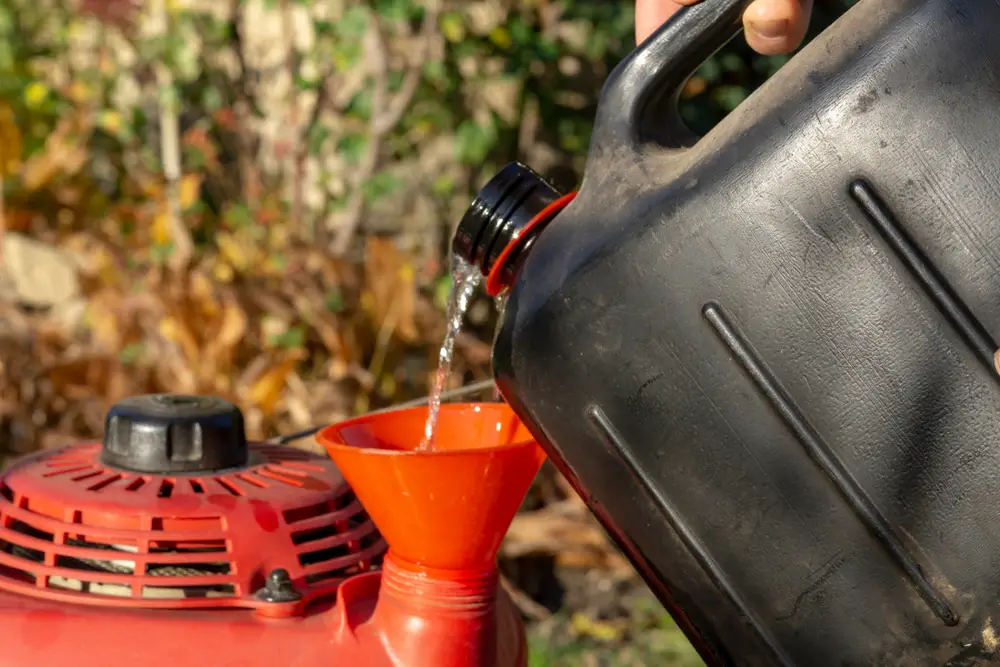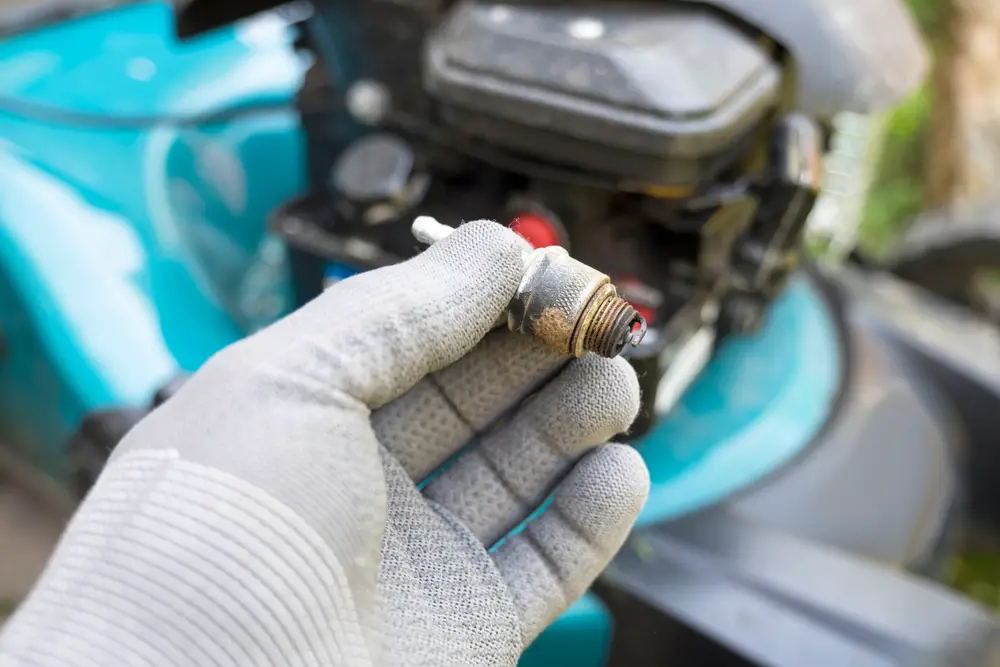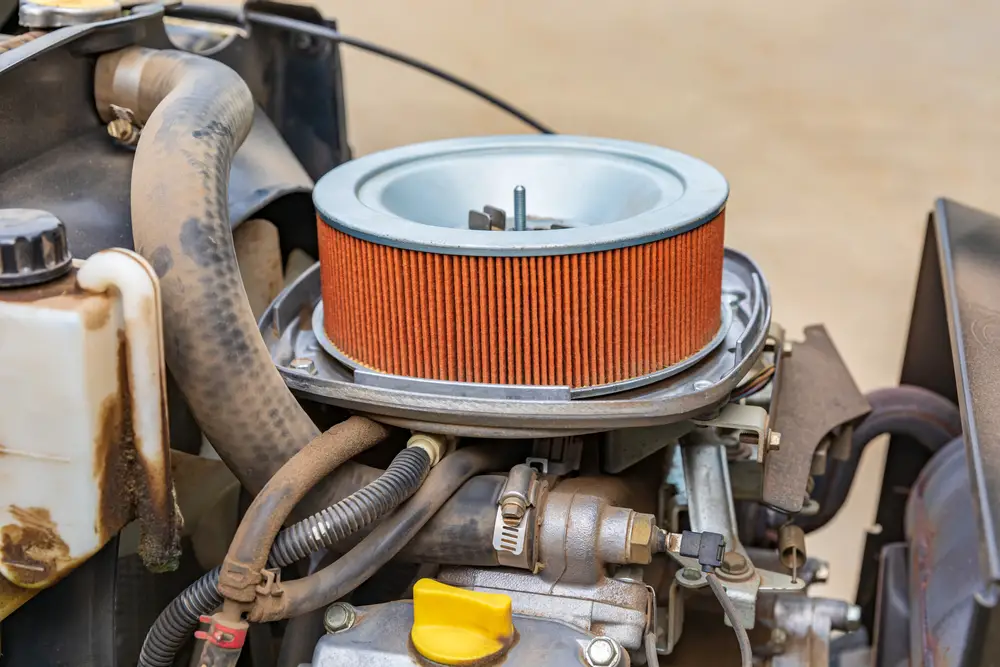Even the best machines need tune-ups every now and then. This is just a regular part of good maintenance, and it’s a regular part of what keeps those machines at their best. So, when it comes to how to tune up a riding lawn mower, what do you do?
In this content you’ll learn:
What Is A Tune-Up Anyway?
There are lots of versions of the tune-up. In general, though, tune-ups are as simple as changing the oil, changing the spark plug, and changing the air filter. If you’re comfortable or experienced, you can always add other things to your tune-up list though.
When Is The Right Time To Tune Up A Riding Lawn Mower?
Typically, an average lawn mower needs a tuning process after one year of use. But it depends on your work pressure. A heavy-duty lawn mower might need proper maintenance twice a year. On the contrary, a light-duty mower might not need maintenance for one and half years.
Now, let’s get to the tune-up.
Steps To Tune Up A Riding Lawn Mower
The first step is going to be pretty typical. You’ll need to gather your tools and practice good safety. Let’s start with the tools.
1. Get Your Tools And Practice Good Safety
So, what tools do you need for a tune-up? Here’s the list:
- New oil
- Rags
- New spark plug
- Socket wrench spark plug set
- New air filter
- Socket wrench set
- Gapper tool
- Screwdriver set
- Work gloves
- Safety glasses
- Drain pan
Once you have all your tools ready, it’s time to take the proper steps to be safe. You can do these in an order that feels comfortable for you, but please take the time to do them. Safety is more important than anything else, even with simple maintenance such as a tune-up.
One thing to do is to make sure your lawn mower is on a level surface. If you have a garage or driveway that’s flat, these are good places to do a tune-up. They’re also good spots because they have proper ventilation.
Next, remove any jewelry and wear loose-fitting clothing. Then put on your safety glasses and work gloves. Even after all of this, if you don’t feel comfortable performing a tune-up yourself, please remember that there are always professionals you can call.
But, if you’re ready to move on, let’s get to the first step in the tune-up: changing the oil.
2. Change The Oil

There may be no more regular part of maintenance than changing the engine oil. This is true of cars, and it’s also true of lawn mowers.
Make Sure You Have The Right Oil
First, double check that the oil you’re using is the correct type. Your owner’s manual should have this information listed. The wrong oil can cause a lot of problems for your lawn mower, so a double check is always recommended.
Disconnect The Spark Plug Wire
Second, disconnect the spark plug wire. This removes any possibility of an accidental lawn mower start.
At this point, you may be wondering why you wouldn’t remove the whole spark plug and replace it to get this step of the tune-up out of the way? The reason why is after the tune-up, if there’s a problem with your lawn mower, it’ll be easier to figure out why by doing each step by themselves.
Drain The Old Oil
Use a rag to clean any dirt or other things on or around the oil tank. Doing so keeps them from getting into the oil, which keeps your lawn mower running well.
Next, put a drain pan underneath the oil plug, which is located on the bottom of your lawn mower. Remove the plug to drain the oil. Tilt the lawn mower a little during this process to make sure you get as much of the oil out as possible.
When this is done, clean off the plug and put it back. Now it’s time to put in the new oil.
Put In The New Oil
Fill your oil tank with the new oil and put the cap back on once done. Reconnect the spark plug wire, check the oil level with the dipstick, and start your lawn mower to make sure it’s running well.
Now it’s time to replace the spark plug.
3. Change The Spark Plug

Once you know your lawn mower is running well after changing the oil, changing the spark plug is the next step. Let’s get to it.
Disconnect The Spark Plug Wire
Yes, we’re back to this again. Disconnect the spark plug wire, same as before. Then, clean around the spark plug so that nothing gets into the engine while it’s being replaced.
Remove The Spark Plug
Using a socket wrench, remove the spark plug. You’ll most likely need to use the socket wrench attachments designed to remove spark plugs.
Set The New Spark Plug
Check your owner’s manual for information on the proper gap between the side electrode and the tip electrode. Then, using a gapper tool, set that gap on the new spark plug.
Put In The New Spark Plug
Put the new spark plug in, then reconnect the spark plug wire. Start your lawn mower to make sure it’s running well, then you’re ready for the final step: changing the air filters.
4. Change The Air Filter

One thing to know is that you don’t always have to change the air filter. Sometimes all you need to do is clean the one you have. If you do choose to clean the air filter, you’ll have to remove it, wash it, (this only works if you have a washable filter), and dry it.
To simply replace the air filter, let’s get to the first step: removing the old air filter.
Remove The Old Air Filter
To remove the old air filter, disconnect the spark plug wire. Then, unscrew the housing for the air filter. Afterward, take the old air filter out.
Put In The New Air Filter
Put the new air filter in according to the product directions and lawn mower owner’s manual. Then, put the housing back on, reconnect the spark plug, and start the lawn mower to make sure it’s running well.
In Summary: How To Tune Up A Riding Lawn Mower
Thankfully, when it comes to how to tune up a riding lawn mower, it’s incredibly easy. With this under your belt, you’ll be ready for the bigger maintenance tasks in no time.
What are your thoughts on all of this though? Which part of the tune-up do you want to tackle first and why? Let us know in the comments below!
